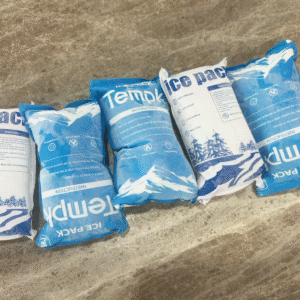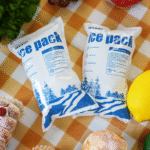Packing a YETI cooler with dry ice is one of the most effective ways to keep your perishables frozen for long periods, whether you’re heading on a camping trip, a long road journey, or need to ship temperature-sensitive goods. Dry ice’s extreme cold temperature makes it a top choice, and in combination with YETI’s durable insulation, it ensures maximum cold retention. En esta guía, we’ll walk you through how to pack your YETI cooler with dry ice effectively, including safety tips and considerations to make the most of this cooling method.

-
How can you pack your YETI cooler with dry ice to keep everything frozen for days?
-
What precautions should you take when handling dry ice in a cooler?
-
How long will dry ice last in your YETI cooler depending on conditions?
-
Essential tips for safely transporting items using dry ice and your YETI cooler.
What Is Dry Ice and Why Use It in a Cooler?
Dry ice is solid carbon dioxide (Co₂) at -109.3°F (-78.5°C), far colder than regular ice, which makes it ideal for long-term freezing. Unlike regular ice that melts into water, dry ice sublimates directly into gas, which makes it perfect for situations where liquid water is undesirable (such as when storing frozen meats, mariscos, u otros productos sensibles a la temperatura). When used in a YETI cooler, dry ice can keep items frozen for up to several days, depending on the cooler size and other factors like ambient temperature.
Why choose dry ice for your cooler?
-
Superior cold retention: Keeps items frozen at extremely low temperatures for longer than regular ice.
-
No melting water: Avoids the mess and potential damage caused by water runoff from melting ice.
Which YETI Coolers Are Compatible with Dry Ice?
Not every YETI cooler is suitable for storing dry ice. It’s essential to use coolers specifically designed to handle the extreme temperatures of dry ice. The following YETI coolers are compatible:
-
YETI Tundra® Series Hard Coolers
-
YETI Roadie® Hard Coolers
-
YETI TANK® Ice Bucket
These models feature durable rotomolded construction and proper gaskets to prevent damage and contain the dry ice’s extreme cold. Avoid using soft-sided coolers like YETI Hopper® or any model without vents, as the cooler can warp and cause gas pressure buildup, which can be dangerous.
Step-by-Step Guide to Packing a YETI Cooler with Dry Ice
Step 1: Pre-chill Your Cooler
Before adding dry ice, it’s vital to reduce the internal temperature of the cooler. To do this, place regular ice inside the cooler and leave it for a few hours or overnight. This step helps to lower the initial temperature inside the cooler, allowing dry ice to last longer once placed inside.
Step 2: Wrap Your Dry Ice
Always handle dry ice with gloves or tongs to avoid frostbite. Wrap the dry ice in newspaper, toallas, or thick cloth to act as a thermal buffer. This insulation slows the sublimation process and prevents direct contact with your food or beverages, which could result in frost damage.
Step 3: Layering the Cooler
For maximum cold retention, layer your cooler in the following order:
-
Bottom Layer: Place a layer of regular ice or ice packs (YETI Ice Blocks work well here).
-
Capa intermedia: Add your perishable items such as frozen meats, mariscos, or other frozen foods.
-
Top Layer: Place the wrapped dry ice on top of the frozen items. The cold air from dry ice sinks, ensuring that the items at the bottom of the cooler remain frozen for longer.
Step 4: Minimize Air Space
Air pockets inside the cooler speed up the sublimation process of dry ice. Fill any gaps with additional ice packs or towels to create a compact cold environment. This reduces the speed at which the dry ice sublimates, ensuring it lasts longer.
Step 5: Seal and Store Properly
Once packed, seal the cooler tightly to prevent warm air from entering. Sin embargo, do not seal the cooler completely — it’s important to allow the gas from the dry ice to escape. Ensure the cooler is stored in a shaded, cool area, away from direct sunlight or heat sources.
Important Safety Precautions When Using Dry Ice
Handling dry ice requires special care due to its extremely cold temperature and the potential risks associated with carbon dioxide gas. Here are some essential safety precautions:
-
Ventilación: Always ensure the area is well-ventilated. El hielo seco se sublima en gas dióxido de carbono, which can displace oxygen in poorly ventilated areas, leading to suffocation.
-
Handling: Never touch dry ice with your bare hands. Always use insulated gloves or tongs to prevent frostbite.
-
Almacenamiento: Never store dry ice in airtight containers, as pressure buildup can lead to dangerous explosions. Always leave a vent open to release gas safely.
The Risks of Dry Ice Use
-
Suffocation Hazard: In a confined space, CO₂ buildup can be dangerous. Always keep the cooler in a well-ventilated area.
-
Frostbite: Direct contact with dry ice can cause serious injuries. Always wear protective gear.
-
Explosion Risk: If a cooler is sealed too tightly, the pressure from sublimating CO₂ can cause an explosion. Always ensure that the cooler is ventilated.
How Long Does Dry Ice Last in a YETI Cooler?
The lifespan of dry ice in your YETI cooler depends on several factors, including the cooler size, la cantidad de hielo seco, and external temperature. Here’s an overview:
| Cooler Size | Dry Ice Duration | Ideal Use Case |
|---|---|---|
| Small YETI Cooler (Roadie 24) | 1-2 días | Short trips |
| Medium YETI Cooler (Tundra 45) | 2-3 días | Weekend trips |
| Large YETI Cooler (Tundra 65) | 3-4 días | Extended storage |
Larger amounts of dry ice and efficient cooler insulation will increase the duration. Always monitor the cooler to ensure the contents stay at the desired temperature.
Environmental Considerations and Trends in 2025
As we progress through 2025, the cold chain industry is seeing a shift towards more sustainable dry ice alternatives. Many companies are innovating to reduce the environmental impact of dry ice production, con materiales ecológicos y biodegradable packing options coming into play. Además, recycled CO₂ pellets are gaining popularity as a greener option for extended cooling periods.
Preguntas frecuentes (Preguntas frecuentes)
Q1: How long will dry ice last in a YETI cooler?
El hielo seco puede durar entre 1 a 4 days in a YETI cooler, depending on cooler size and environmental factors.
Q2: Can I use dry ice in a YETI Hopper® Soft Cooler?
No, YETI Hopper® Soft Coolers are not compatible with dry ice due to the risk of warping and gas buildup.
Q3: How much dry ice should I use?
As a general guideline, use approximately 0.3 lb of dry ice per quart of cooler capacity for a 48-hour duration.
Conclusión
Using dry ice in a YETI cooler is a reliable and effective way to keep items frozen for extended periods. By following the proper packing methods, using the correct cooler models, and adhering to safety guidelines, you can ensure that your contents remain safe and properly chilled. Always ensure proper ventilation, handle dry ice with care, and be mindful of environmental considerations as the cold chain industry evolves.























